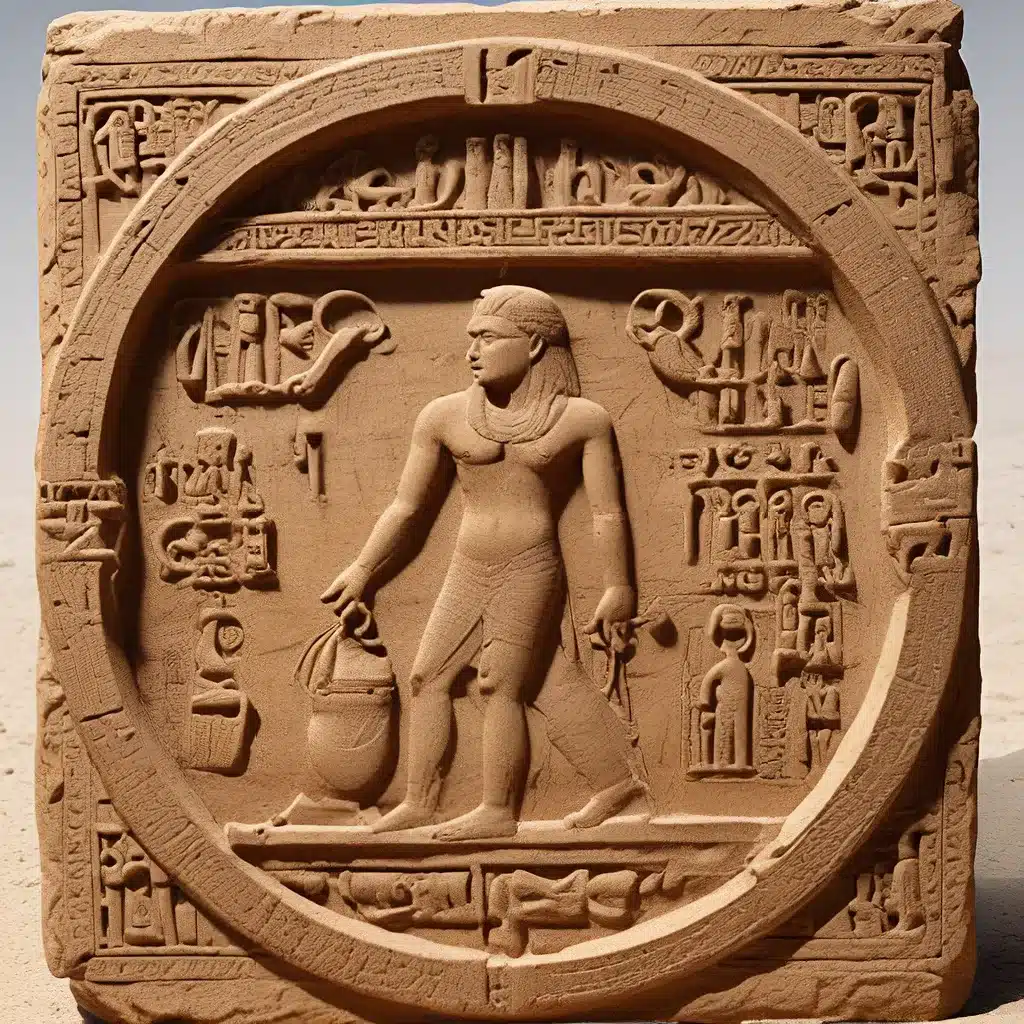
In the vast and captivating realm of ancient civilizations, art serves as a profound window into the past, revealing intricate stories, beliefs, and social structures that transcend the limitations of language. From the enigmatic hieroglyphs of Egypt to the deceptively simple pottery designs of Mesopotamia, these cultures wielded art as a potent tool to convey their innermost thoughts, religious convictions, and societal hierarchies.
Unlocking the Code: A Universal Language of Symbols
Imagine a world before the widespread use of written languages, where symbols became a universal means of expression, transcending the boundaries of spoken words. A simple lotus flower in Egyptian art was not merely a decorative element but a symbol of purity, rebirth, and the sun god Ra. Similarly, the ubiquitous scarab beetle represented transformation and the afterlife. By understanding these symbolic meanings, we can unlock a deeper understanding of ancient artwork, regardless of our cultural background.
Mythology Woven into Art
Many ancient cultures were deeply religious, and their art often depicted scenes from mythology. These stories were not simply entertainment; they served as moral lessons and explained the origins of the universe and humanity’s place within it. Analyzing the figures and scenes depicted in a Greek vase painting can reveal narratives about powerful gods, epic battles, and the consequences of human actions.
Social Hierarchy and Power Dynamics
Art can also be a powerful tool for showcasing social order and power dynamics. The size and placement of figures in ancient art often reflected the importance of individuals within society. A towering pharaoh in Egyptian art emphasized their divine status, while more miniature figures of servants or officials conveyed their place in the hierarchy. Likewise, specific colors or clothing could denote royalty, religious figures, or social classes.
Deciphering the Symbols: A Multifaceted Approach
Unlocking the symbolism in ancient art requires a multifaceted approach. Historians rely on archaeological evidence, religious texts, and comparative studies of other cultures to understand the meaning behind specific symbols. For instance, the winged sun disk, a common motif in Mesopotamian art, is believed to represent a deity or a symbol of divine protection. By piecing together these clues, we can build a richer understanding of the worldview and values of these ancient civilizations.
The Significance of Deciphering Ancient Art
Understanding the symbolism in ancient art is not just an academic exercise; it brings the past to life. It allows us to connect with the thoughts, beliefs, and experiences of people who lived thousands of years ago, offering a glimpse into their hopes, fears, and aspirations. This dialogue across time is invaluable, as it deepens our understanding of the human experience and the universal themes that have resonated throughout history.
Uncovering the Mysteries of the Maya World Tree
One particularly fascinating example of deciphering ancient symbolism can be found in the Maya civilization. The World Tree, a central motif in Maya art and mythology, was believed to represent the axis of the universe, connecting the underworld, the mortal realm, and the heavens. By analyzing the symbolic elements associated with this iconic image, such as the serpent, the quetzal bird, and the jaguar, researchers have been able to unravel the complex cosmological beliefs of the Maya people.
Exploring the Thomas Jefferson Building’s Main Reading Room
Another remarkable example of ancient symbolism can be found in the Main Reading Room of the Thomas Jefferson Building in the Library of Congress. This stunning architectural masterpiece is adorned with intricate murals and allegorical figures that represent the pursuit of knowledge, the preservation of history, and the power of the written word. By deciphering the hidden meanings behind these artistic elements, we can gain a deeper appreciation for the lofty ideals that inspired the creation of this iconic space.
Conclusion: Unlocking the Secrets of the Past
As we continue to explore and unravel the mysteries of ancient civilizations, the study of symbolic art and its meanings remains a crucial and fascinating field of inquiry. By delving into the symbolic language of the past, we not only deepen our understanding of these cultures but also connect with the timeless human experience that transcends the boundaries of time and space. Whether it’s the hieroglyphs of Egypt, the pottery designs of Mesopotamia, or the World Tree of the Maya, each ancient artifact holds the potential to reveal captivating stories and valuable insights that can enrich our knowledge of the human journey.
So the next time you encounter a piece of ancient art, take a moment to look beyond the surface and immerse yourself in the hidden language waiting to be discovered. Who knows what treasures of the past might be unveiled, shedding light on the universal truths that have endured throughout the ages?


